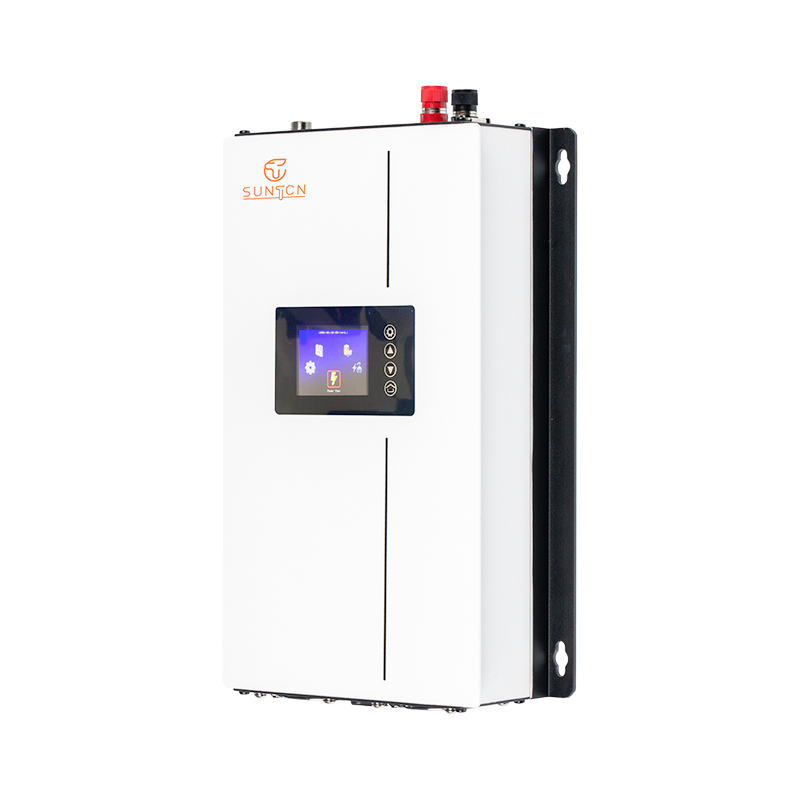With the transformation of the global energy structure, more and more people are paying attention to renewable energy, especially solar energy. As a clean and efficient energy source, solar energy has been widely used worldwide, and solar grid-connected inverter is one of the key devices to realize the integration of solar power generation system into the grid.
Working principle of solar grid-connected inverter
The main function of solar grid-connected inverter is to convert the direct current (DC) generated by solar panels into alternating current (AC) that meets the requirements of the grid. This process is not just a simple current conversion, but also involves precise current regulation and grid synchronization.
DC to AC: The power generated by solar panels is direct current, but grids use alternating current. Therefore, the core task of the inverter is to convert this direct current into alternating current. This conversion is achieved by the power electronics inside the inverter, which adjusts the direction and frequency of the current by controlling the switching devices (such as IGBT or MOSFET).

Grid synchronization: In order to ensure that the grid-connected power is synchronized with the grid, the inverter also needs to have the ability of frequency synchronization and phase synchronization. This means that the inverter needs to be precisely adjusted according to the voltage, frequency and phase of the grid to ensure that the output power does not interfere with the normal operation of the grid.
Maximum Power Point Tracking (MPPT): In order to improve the efficiency of the system, modern grid-connected inverters are usually equipped with Maximum Power Point Tracking (MPPT) technology. This technology can monitor the output of solar panels in real time and automatically adjust the working point to ensure that the solar panels always output power under different lighting conditions.
Functions and advantages of solar grid-connected inverters
Efficient energy conversion: Solar grid-connected inverters can efficiently convert the electricity generated by solar panels into AC power required by the grid. Modern grid-connected inverters usually have high energy efficiency and can increase the efficiency of converting DC to AC to more than 98%.
Intelligent management: With the advancement of technology, many grid-connected inverters have intelligent management functions. Through the connection with smart meters and monitoring systems, users can monitor the operating status, power generation and efficiency of solar power generation systems in real time. This intelligent management not only improves the reliability of the system, but also helps users optimize energy use.
Support for the grid: Grid-connected inverters can not only transmit solar power to the grid, but also help the grid maintain stability. In some cases, the inverter can provide reactive power support, assist the grid in regulating voltage, and further enhance the stability and security of the grid.
Environmentally friendly: As a renewable energy technology, the use of solar grid-connected inverters reduces dependence on fossil fuels, reduces carbon emissions, and helps slow the progress of climate change. In addition, since solar energy itself is a clean energy source, the use of solar power generation systems does not produce any harmful pollutants.
Market application and future development
As the global demand for renewable energy continues to increase, the market for solar grid-connected inverters is also continuing to expand. More and more countries and regions have introduced policies to encourage households and businesses to install solar power generation systems and promote the popularization of green energy. Moreover, with the continuous advancement of solar power generation technology, grid-connected inverters will continue to be optimized in terms of efficiency, cost, and intelligence in the future.
Residential and commercial applications: At present, solar grid-connected inverters are mainly used in residential homes and commercial buildings, especially in sunny areas. Whether it is a rooftop photovoltaic system or a large ground photovoltaic power station, the inverter is an indispensable component.
Electric vehicle charging station: With the popularity of electric vehicles, solar grid-connected inverters also play an important role in electric vehicle charging stations. By converting solar energy into grid power, charging stations can provide electric vehicles with a greener and more environmentally friendly energy source.
Future development trends: With the continuous advancement of technology, solar grid-connected inverters may have stronger intelligent functions in the future, such as seamless connection with energy storage systems, further improving energy utilization efficiency. In addition, as costs decrease, the popularization of solar power generation systems will become more economical and feasible.
As the core component of solar power generation systems, solar grid-connected inverters not only play the role of power conversion, but also help the stable operation of the power grid. With the continuous development of technology and the increase in market demand, solar grid-connected inverters will play an increasingly important role in promoting global energy transformation. By continuously optimizing its efficiency, intelligence and reliability, solar grid-connected inverters will make greater contributions to achieving sustainable energy goals.

 English
English Español
Español Deutsch
Deutsch










